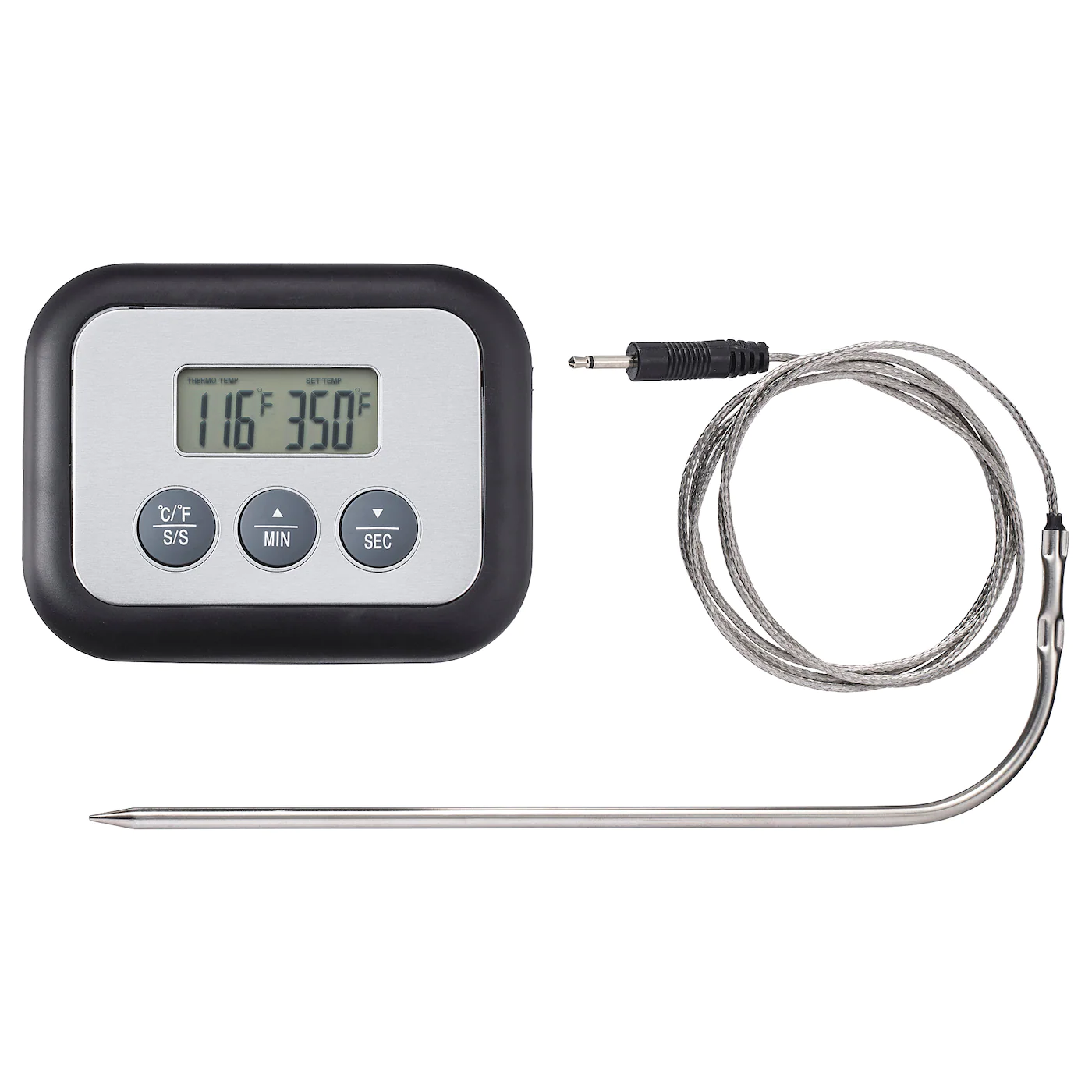Input Devices
Assignment
- group assignment
- probe an input device’s analog levels and digital signals
The goal
This week, we needed to probe an input device to see how its electric properties change with changes in the environment.
Our unstated objective was to get an object that had no publicly available datasheet, and to reverse engineer it in order to deduce its electrical properties, so it can be used in a real world scenario.
The Input Device under test
This is the sensor that I wanted to use this week.
It’s a thermal probe that you can find as part of this IKEA kitchen timer/temperature reader.
As I have already revealed before, the thermal probe appears to be a simple thermistor with a Negative Temperature Coefficient.

The only published material for this device is the commercial operator’s manual , written in 30 languages, but with no information about the thermal probe, its resistance, or any rated max current.
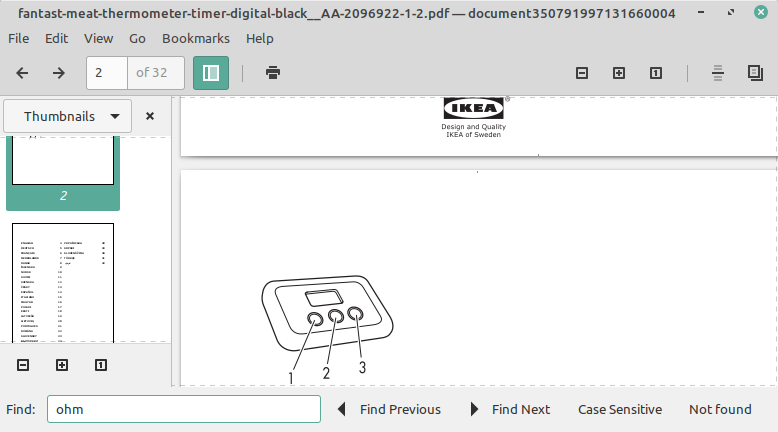
The Datasheet
This is the hand-made datasheet.
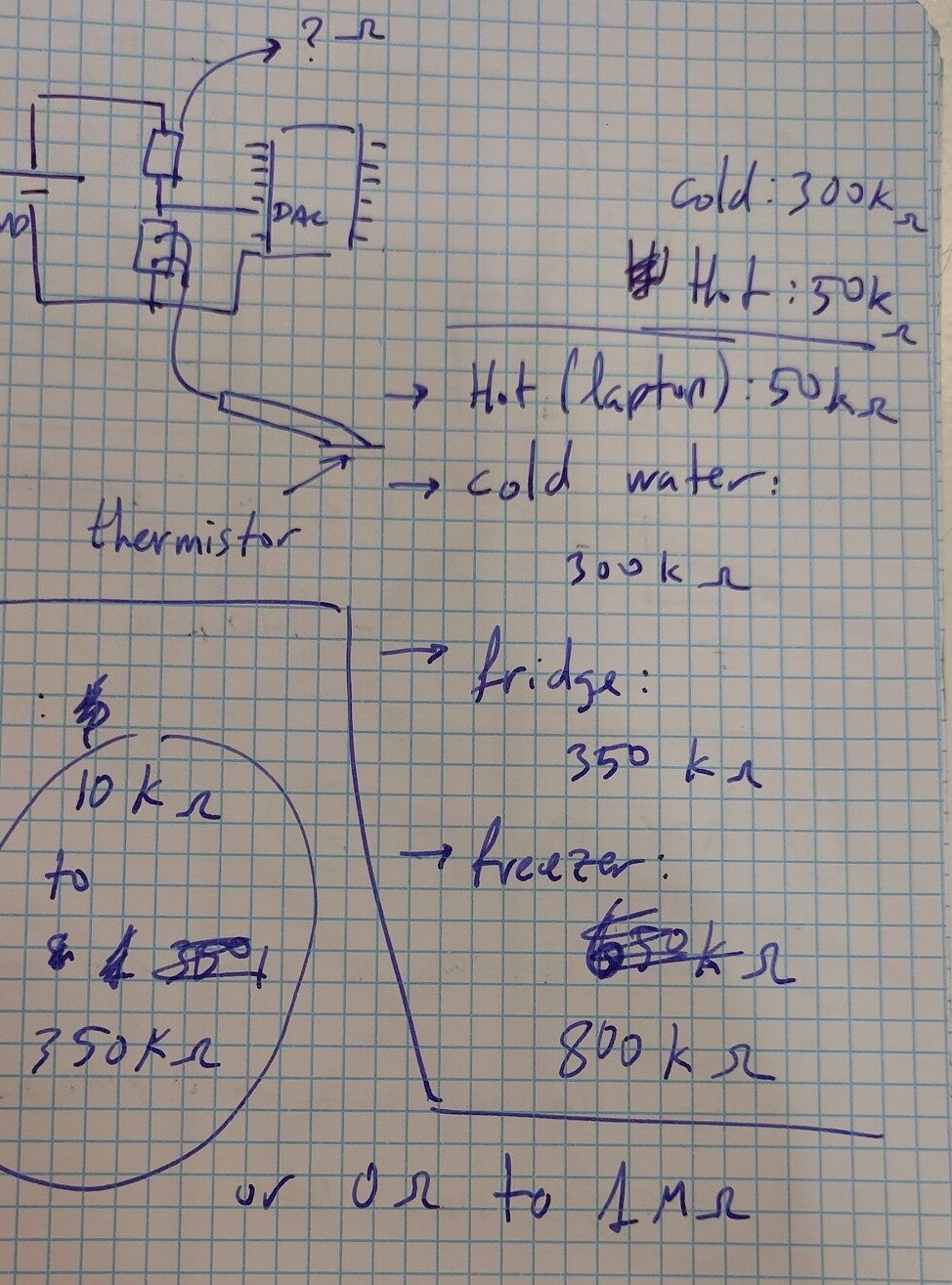
High Temperature is Low Resistance
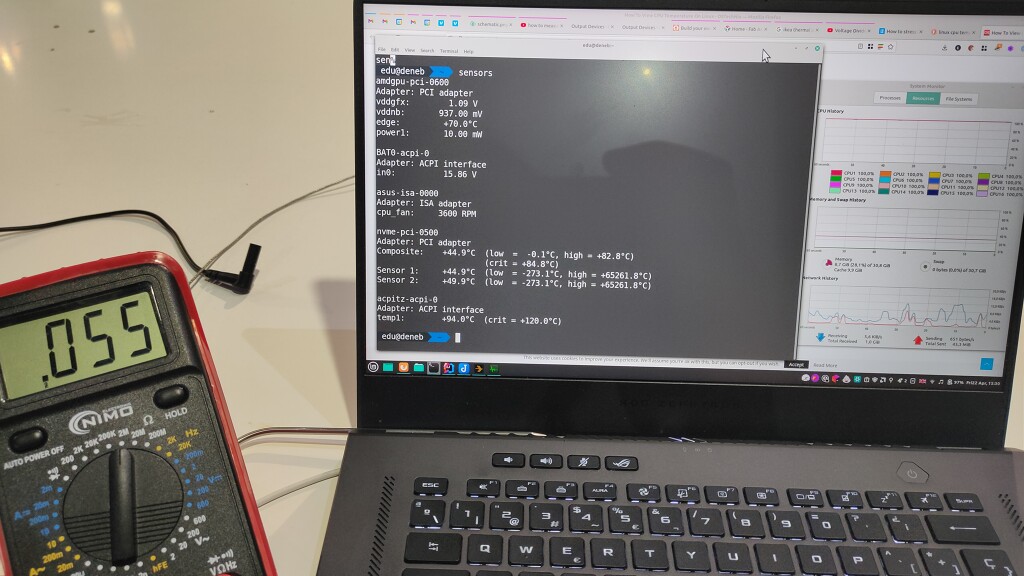
This was an easy way to set the probe to around 40+ degrees, from the comfort of my table. The only cost: 2 minutes of my life, and 3 months off of the lifespan of my CPU! Win/Win!
Low Temperature is High Resistance

This was tested by putting the probe in the Lab’s freezer for 20 minutes.
The datasheet transcript
| Space | Temperature | Resistance |
|---|---|---|
| Laptop heat exhaust (100% CPU) | 40 °C | 50K Ohm |
| Ambient Temperature | 24 °C | 150K Ohm |
| Cold Water | 7 °C | 300K Ohm |
| FabLab Fridge | 5 °C | 350K Ohm |
| Freezer | -15 °C | 800K Ohm |
If we plot these values into a cartesian plane, we can see that the trend is clearly exponential and has a negative coefficient.
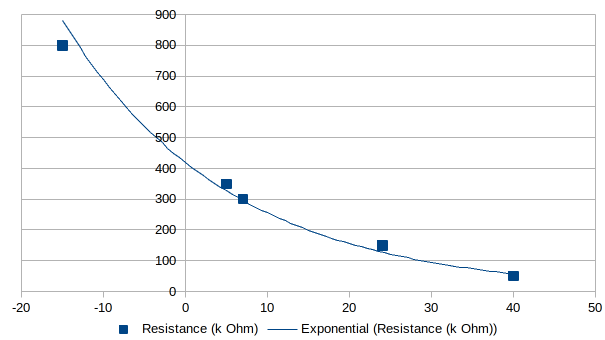
Applications
Visit Edu’s documentation to find out how this custom-made datasheet was used to correctly probe temperatures.
